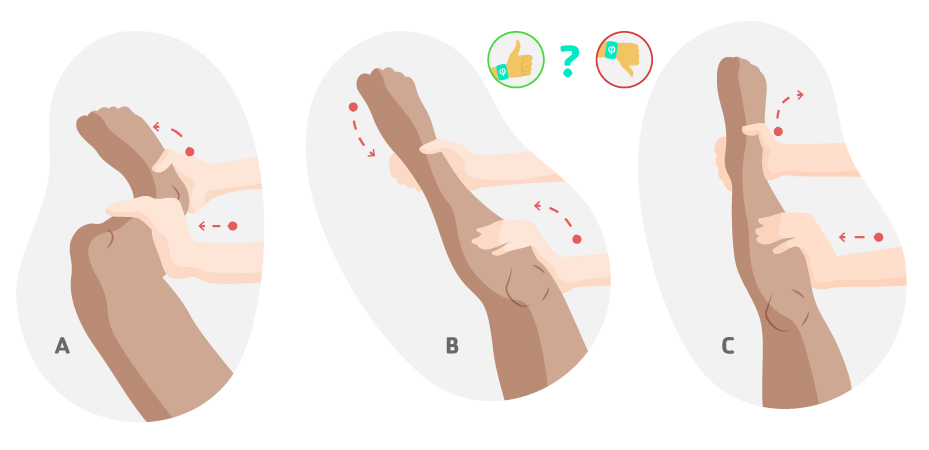
Lateral pivot shift test
It is used to assess anterolateral knee instability due to anterior cruciate ligament (ACL) injury. It is one of the most widely accepted and used tests today.
- Required material: A physiotherapy couch. If the test is performed on the floor, we will need a mat or matting.
- Procedure: The assessment manoeuvre should be performed with the subject in the supine position (face up), the hip of the injured limb in neutral position, the knee extended and the heel fixed. The assessor should hold the external femoral condyle with one hand at the level of the upper part of the tibia and fibula and, with the other hand, take a grasp at the level of the external malleolus and sole of the foot. From this position, proceed to perform hip abduction, internal rotation of the leg and knee valgus (see illustration).
- Assessment: The test is considered abnormal or positive when the lateral tibial plateau is subluxated anteriorly and is classified with the following values according to severity: 1) When there is a slipping sensation 2 ) When there is a clunk. The movement on the outer side is easier to appreciate, but on the inner side it is more difficult. 3) Indicates severe femorotibial impingement and indicates ACL rupture. If there is no abnormal movement of the tibial plateau over the femur (subluxation), the test is considered normal or negative.
- Remarks: This test can be positive in either isolated injury or combined with lateral structures. Injury to other structures, iliotibial band insufficiency, meniscus, osteoarthritis, etc. should be taken into account.
Take this test and 139 more in our App